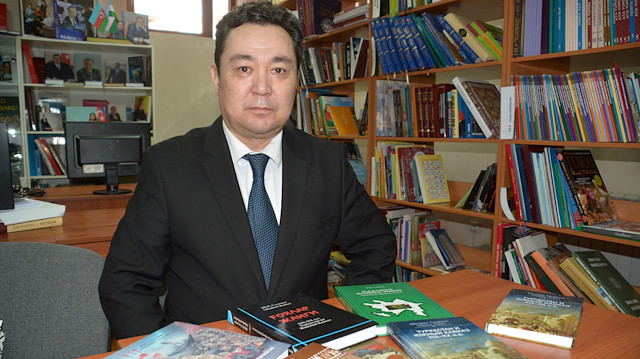
Historians believe 35,000 people killed in 3 months in 1918 by Armenian groups in Fargana Valley in Central Asia
Even a century later, memories of the killing of 35,000 civilians by armed Armenian Dashnak group are still fresh in the people's minds in Central Asian nations.
Historians have recorded that more than 200 cities and settlements in the Fergana Valley in eastern Uzbekistan were destroyed in 1918.
"Mostly elderly, women and children were killed in the massacre that began on Feb. 13, 1918, and lasted for three months, by the Dashnaks to destroy the Turkistan Autonomy," said Sohret Barlas, an Uzbek historian, researcher, and writer who has been studying Dashnaks for over past 29 years.
The Armenian Revolutionary Federation, referred to as Dashnaks – a terrorist group – was founded in 1890 to target Turkic Muslims. They carried out a massacre in Hokand city in February 1918 and then in Azerbaijan that March, killing over 35,000 people.
"More than 35,000 people were brutally killed," said the researcher. He recalled that the Dashnak groups aimed to destroy the Turkistan Autonomous Republic, one of the democratic states established by the Turkic people after the collapse of the Czarist regime in Russia.
The Russian Bolsheviks used the Armenian Dashnak groups, who saw the Turkistan government as a great danger.
As many as ten wagons of Dashnak militants were brought to Ashgabat and then to Hokand through the Caspian Sea. The Turkistan Autonomous Republic could survive only for three months.
Barlas said the Dashnaks never fought against soldiers or armed people but targeted unarmed civilians to inculcate fear. He recalled that they torched a hospital and a mosque in Hokand and did not allow people to escape.
Referring to his field studies, Barlas said the memories of this massacre had not been erased from people's minds even after a century.
Apart from Fargana, the Dashnaks operating under the Baku Council's mandate, or Baku Soviet, killed thousands of civilians in the city of Baku, capital of Azerbaijan, in April-May 1918 as well because of their religious affiliations.
*Writing by Havva Kara Aydin


